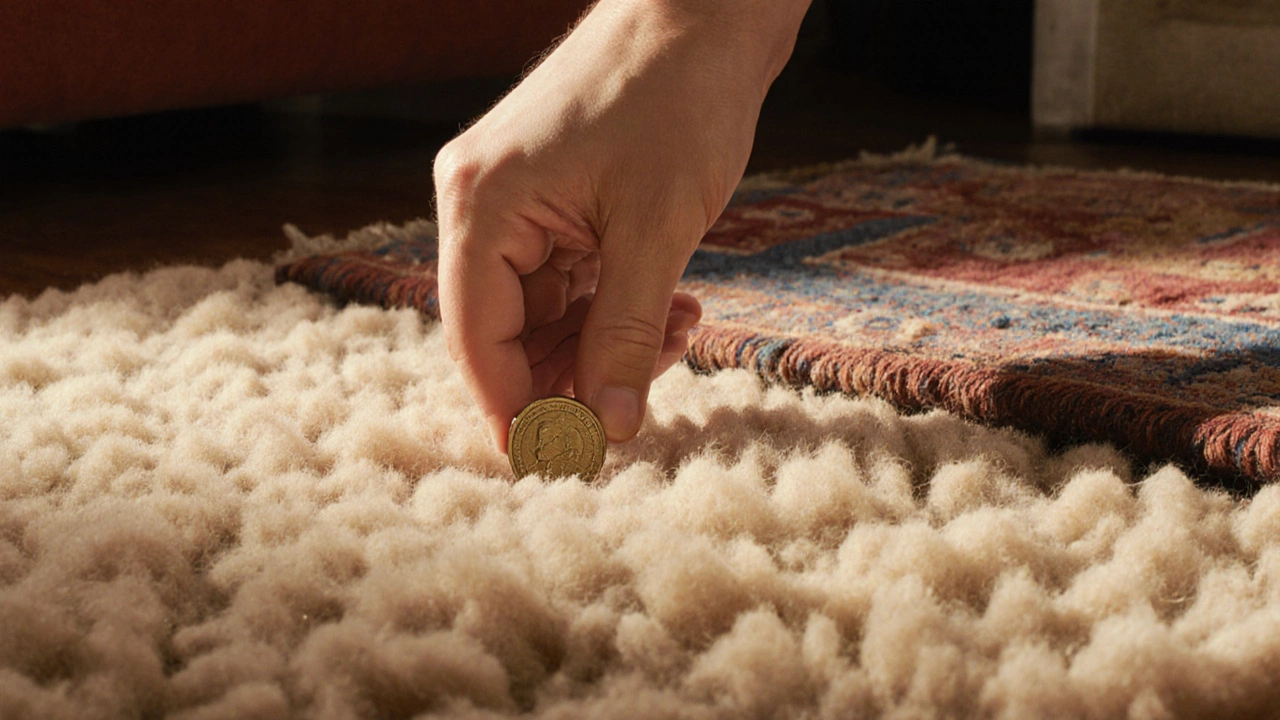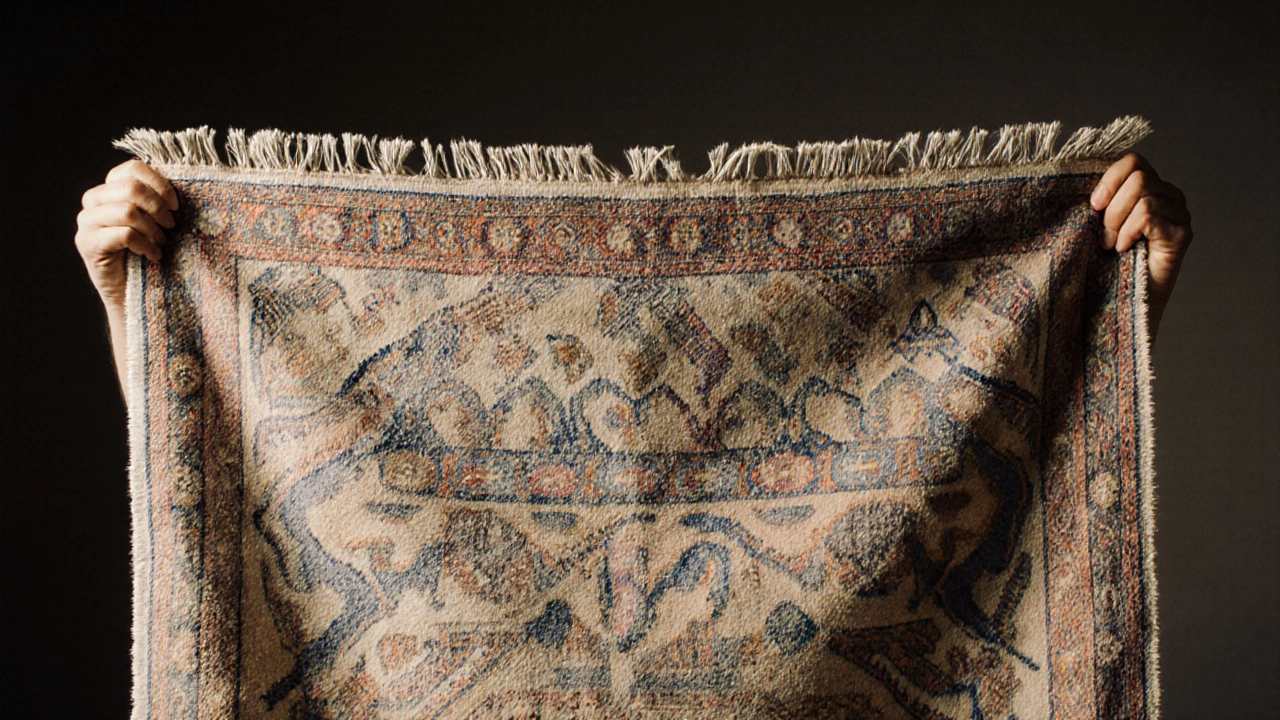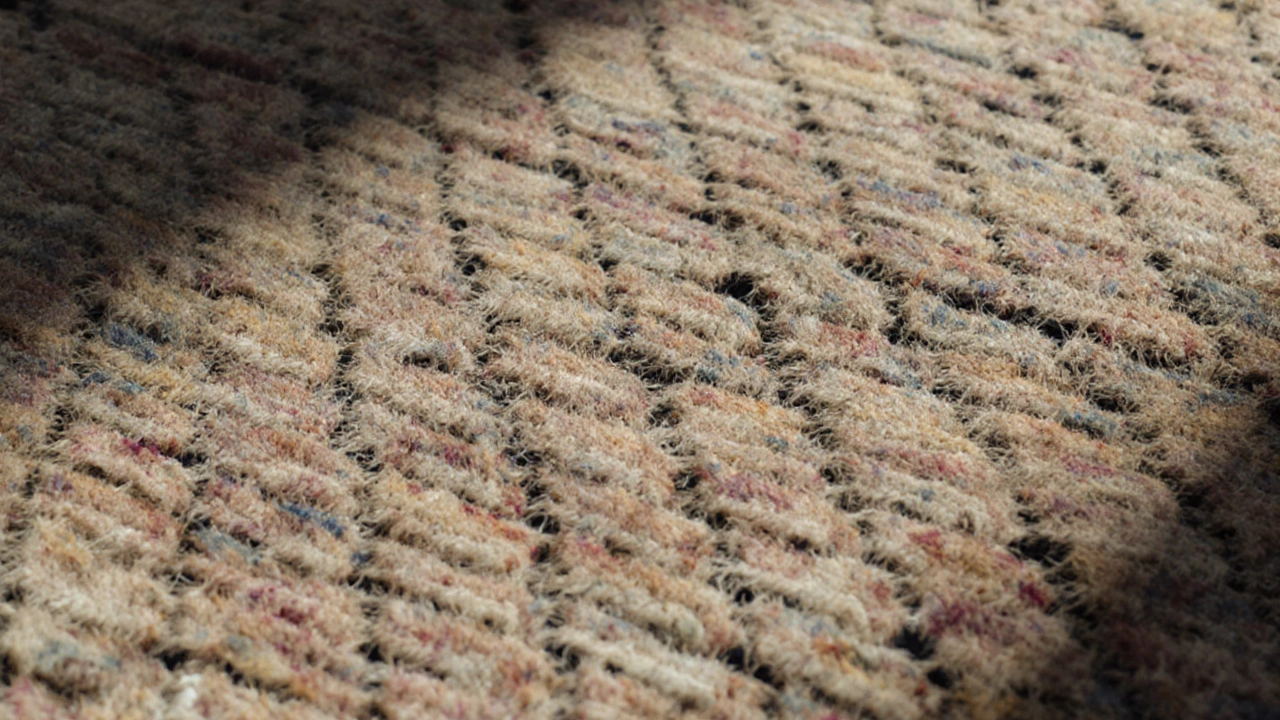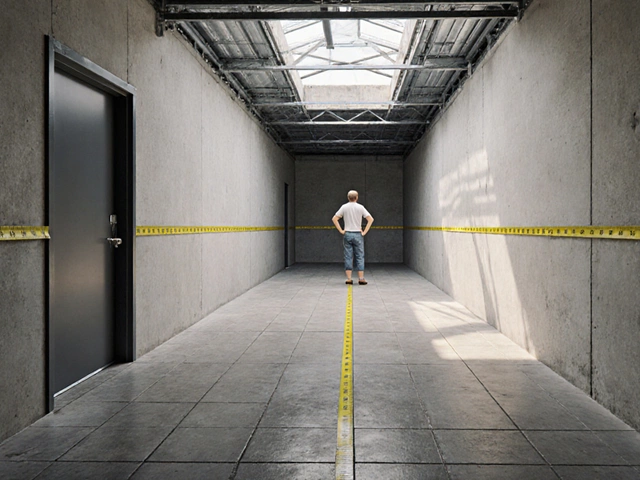Buying a rug that looks nice is easy. Finding one that will last five, ten, or even twenty years? That’s harder. Too many people end up with a rug that sheds, fades, or falls apart after a year-especially when they buy based on price alone. The truth is, a cheap rug might save you money now, but it’ll cost you more in the long run. So how do you know if a rug is quality? It’s not about brand names or fancy labels. It’s about what’s inside-and how it’s made.
Check the knots
The number of knots per square inch is the single most reliable indicator of a handwoven rug’s quality. This applies to Persian, Turkish, Tibetan, and other traditional rugs. The more knots, the finer the design, and the longer it will last. A low-end machine-made rug might have 50 to 80 knots per square inch. A mid-range hand-knotted rug starts around 100 to 150. High-end rugs, like those from Kashan or Isfahan, often exceed 300 knots per square inch.
How do you count them? Flip the rug over. Look at the back. You’ll see tiny loops or knots forming the pattern. Count the knots in a one-inch square. If it’s hard to count because the knots are so tight, that’s a good sign. If you can count them easily with your eyes, it’s probably low density.
Don’t be fooled by rugs labeled "handmade" that are actually hand-tufted. Tufted rugs are glued and stitched, not knotted. They’re faster to make and wear out faster. Look for the word "hand-knotted"-that’s the real deal.
Feel the pile
Touch the surface. Not just lightly-really press into it. A quality rug will feel dense and springy. If your fingers sink in easily and the backing shows through, that’s a red flag. High-quality wool, especially from New Zealand or Australia, has natural resilience. It bounces back after being stepped on. Synthetic fibers like polyester or nylon may look shiny and new, but they flatten quickly and don’t recover.
Test it. Place a coin flat on the rug and press down. Lift it. If the pile springs back immediately, it’s good. If it stays flattened, the fibers are low quality or the rug is poorly constructed. Wool is the gold standard. It’s naturally stain-resistant, fire-retardant, and lasts decades. Avoid rugs made mostly of acrylic or olefin-they look okay at first, but they pill, fade, and get matted down fast.
Inspect the backing
The back of a rug tells you everything about its construction. On a quality hand-knotted rug, the pattern on the back mirrors the front, just less sharp. You should see individual knots clearly. If the back is covered in a thick layer of latex or glue, that’s a sign it’s machine-made or tufted. That glue can break down over time, especially in humid climates, causing the rug to curl or shed.
Some rugs have a secondary backing added for stability. That’s fine if it’s woven cotton or jute. But if it’s a plastic mesh or rubber sheet, avoid it. That’s a cheap fix to hold together a poorly made rug. A good rug doesn’t need glue to hold its shape. It’s built to last on its own.

Check the fringe
The fringe isn’t just decorative-it’s part of the rug’s structure. On a hand-knotted rug, the fringe is an extension of the warp threads, tied off by hand. It’s not sewn on. If the fringe looks like it was glued or stitched on afterward, it’s a sign the rug was made on a machine. A real hand-knotted rug’s fringe will match the color and texture of the pile. It might be slightly uneven, and that’s normal. Perfectly uniform fringe? That’s machine-made.
Also, check if the fringe is fraying. Some wear is expected, but if it’s unraveling badly, the rug’s foundation is weak. A quality rug’s fringe should be tightly knotted and held in place with a simple overcast stitch. If it’s falling apart, the whole rug might be too.
Smell it
Yes, really. Bring the rug close to your nose. A new, high-quality wool rug should smell faintly like wool-clean, earthy, maybe a little like a sheepskin coat. If it smells chemical, like plastic, paint, or strong ammonia, that’s a warning. Many cheap rugs are treated with formaldehyde or other toxins to make them look new or resist stains. These chemicals off-gas for months, especially in warm rooms. They’re not just unpleasant-they’re unhealthy.
Some rugs are labeled "low-VOC" or "eco-friendly." That’s good, but don’t just take the label. Smell it yourself. If it stinks, walk away. Even if it’s on sale. You’re not just buying a rug-you’re buying something that sits under your feet every day.

Look at the dyes
Color matters more than you think. Natural dyes, made from plants, insects, or minerals, fade slowly and beautifully over time. They develop a soft patina. Synthetic dyes, on the other hand, can bleed, fade quickly, or look unnaturally bright. Test for colorfastness. Dampen a white cloth and rub it gently on an inconspicuous area. If the cloth picks up color, the dye isn’t set properly. That means it’ll bleed when you clean it-or even when you spill water on it.
Also, look at the edges of the pattern. In a hand-dyed rug, colors might have slight variations. That’s called "abrash," and it’s a sign of authenticity. Machine-dyed rugs have perfectly uniform color. That’s not a feature-it’s a giveaway it’s mass-produced.
Ask about origin and materials
Not every rug from Iran or India is high quality, but most of the best hand-knotted rugs come from those regions. Ask where it was made. Reputable sellers will tell you the village or region. If they just say "imported," that’s a red flag. Also, ask what the pile is made of. Pure wool? Wool and silk? Cotton foundation? If they hesitate or say "it’s a blend," dig deeper. A quality rug will have at least 80% wool in the pile. Silk is used for detail in high-end rugs but shouldn’t be the main fiber-it’s too delicate for high-traffic areas.
Don’t be afraid to ask for photos of the back. A good seller will send them. If they refuse, that’s a sign they’re hiding something.
What to do next
If you’re shopping for a rug, take these checks with you. Don’t buy on impulse. Even if it’s beautiful, if it fails two or more of these tests, it’s not worth it. A quality rug is an investment. It should outlast your furniture, your paint, even your kids’ childhood.
For high-traffic areas like living rooms or hallways, choose a dense, hand-knotted wool rug with at least 120 knots per square inch. For bedrooms or low-use spaces, you can go for something finer, even with silk accents. Avoid anything with synthetic fibers unless you’re on a tight budget and know you’ll replace it in a few years.
And remember: if it seems too good to be true, it probably is. A 5x8 hand-knotted wool rug made in Iran won’t cost $99. It’ll cost $800 or more. That’s not expensive-it’s fair. You’re paying for decades of use, not a season’s trend.
Can a machine-made rug be high quality?
Yes, but rarely. Some machine-made rugs use high-density weaving and premium synthetic fibers like nylon or polypropylene to mimic hand-knotted rugs. These can last 5 to 10 years and are great for high-traffic areas. But they won’t have the durability, texture, or value retention of a true hand-knotted wool rug. If you’re looking for something that lasts 20+ years, stick with hand-knotted.
Is a thicker rug always better?
No. Thickness doesn’t equal quality. A rug can be thick but have low knot density or poor fiber quality. What matters is how tightly the fibers are woven and how resilient they are. A thin, densely knotted rug can be more durable than a thick, loosely made one. Focus on knot count and pile density, not just thickness.
How long should a quality rug last?
A well-made hand-knotted wool rug can last 50 to 100 years with basic care. Many antique rugs from the 1800s are still in use today. Even a mid-range rug with 120+ knots per square inch should last 15 to 25 years under normal use. Machine-made rugs typically last 5 to 10 years before showing significant wear.
Do I need a rug pad?
Yes, always. A rug pad protects the back from abrasion, prevents slipping, and adds cushioning. For high-quality rugs, use natural rubber with felt backing. Avoid plastic or vinyl pads-they trap moisture and can damage the rug’s fibers over time. A good pad also makes the rug feel more substantial underfoot.
Can I clean a quality rug myself?
You can spot-clean with mild soap and cold water, but deep cleaning should be done by a professional. Never use a steam cleaner on a hand-knotted rug. The heat and moisture can damage the wool and loosen the knots. Vacuum regularly with a suction-only setting-no beater bar. Rotate the rug every six months to even out wear.







